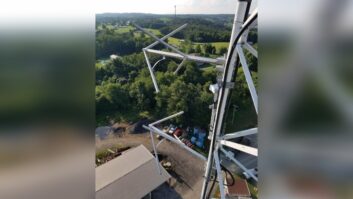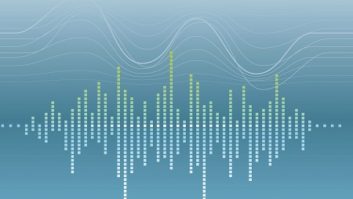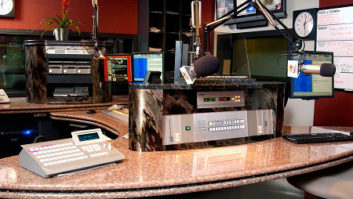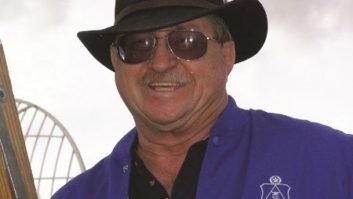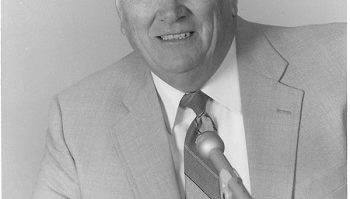A new modulation technique for AM broadcasting was demonstrated by industry pioneer Mike Dorrough at a recent meeting of SBE Chapter 43 in Sacramento. The Advanced Modulation System offers to increase carrier modulation to 200 percent, improving the performance, range and sound quality of AM radio.
Ross du Clair, chief engineer and director of engineering for Clear Channel Communications in Sacramento, attended the meeting and was impressed with the AMS demonstration.
“This is real and it does work,” he said. “No modifications were needed to a standard AM receiver for it to work.”
Louder, farther
There are many potential benefits of the AMS system.
The higher modulation capability would provide up to 6 dB of greater loudness, improving the effective signal-to-noise ratio in the receiver. This will extend the coverage range of existing AM stations without the need to increase carrier power or alter existing allocation schemes.
AM audio fidelity also would be improved with the elimination of asymmetrical modulation processing, which inherently distorts the audio waveform and often can introduce inconsistencies in loudness between male and female voices.
Another benefit of AMS is its compatibility with existing receivers, allowing an immediate improvement to listeners when deployed by an AM radio station. According to Dorrough, AMS would be compatible with stations currently operating with AM stereo or those planning to implement in-band, on-channel digital broadcasting.
“New digital technology allows us to manipulate time and phase relationships to mine the true potential of the AM carrier as a natural platform to support fully modulated, interlaced sidebands,” Dorrough said.
“We started by wondering how can we bring up the sideband energy (in conventional AM) without clipping the negative peaks,” he said. With the Advanced Modulation System, “we’re grabbing the sidebands and bringing them up to the amplitude of the carrier so that sideband energy equals the carrier amplitude.”
By offsetting the modulation envelope, AMS permits higher peak modulation without carrier cutoff.
Tests to come
A prototype 1-watt transmitter was demonstrated at the SBE meeting. Dorrough plans to test a higher-power transmitter experimentally in the ham band and finally move to experimental operation on a high-power AM station.
Local engineer du Clair was enthusiastic about the possibilities of increased modulation on AM radio.
“We would like to participate in an experimental test of this new modulation technique on our station KFBK,” he said. The station, which is celebrating its 80th anniversary, operates with 50 kW at a frequency of 1530 kHz.
Dorrough suggested that some upgrades to station transmitters might be necessary for AMS.
“This technique may require more bandwidth in the IPA stage of existing transmitters. It may also require some beefing up of the power supply,” he said.
While compatible with existing AM receivers, AMS would face some regulatory hurdles.
“I suspect the FCC would have to look at two things: the current modulation standards and the existing NRSC mask for compatibility,” du Clair said.
FCC rules currently allow a maximum of 125 percent positive and 100 percent negative modulation. It will also be necessary to show that the higher modulation does not increase interference to other AM stations by generating energy outside of the occupied bandwidth limits as defined by the NRSC.
Mike Dorrough was given the NAB Radio Engineering Achievement Award in 2000 for his contributions to the art of audio processing and monitoring.

